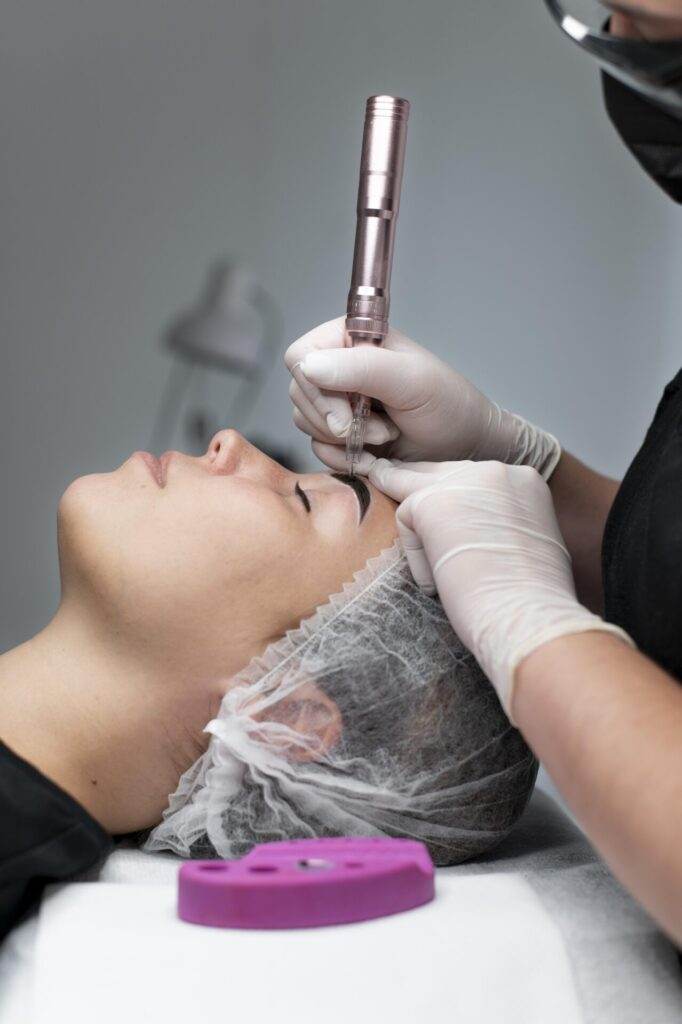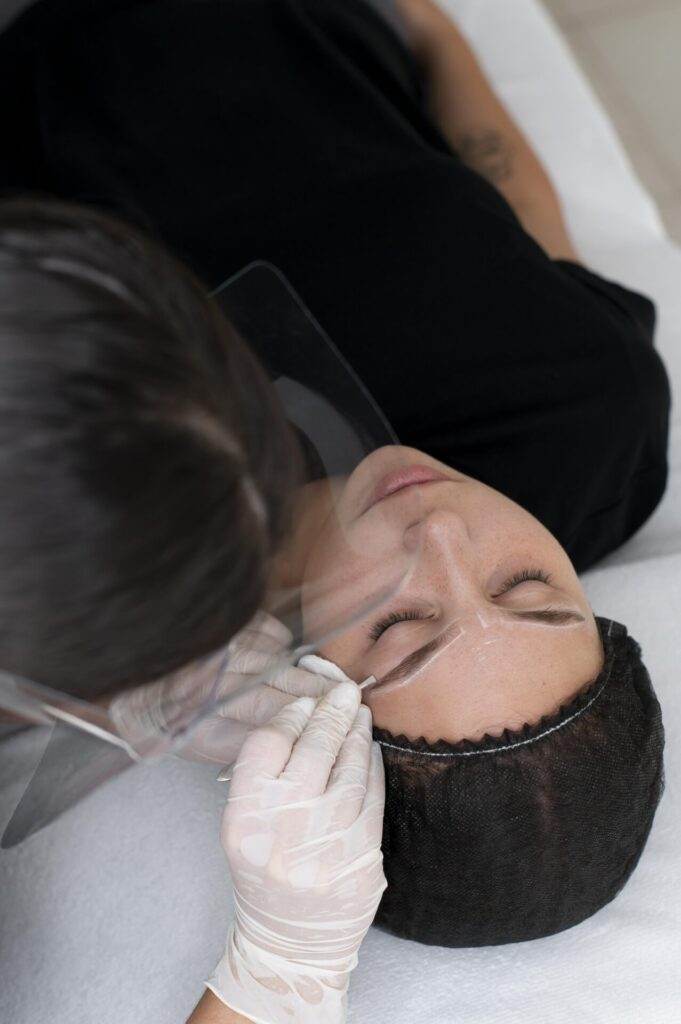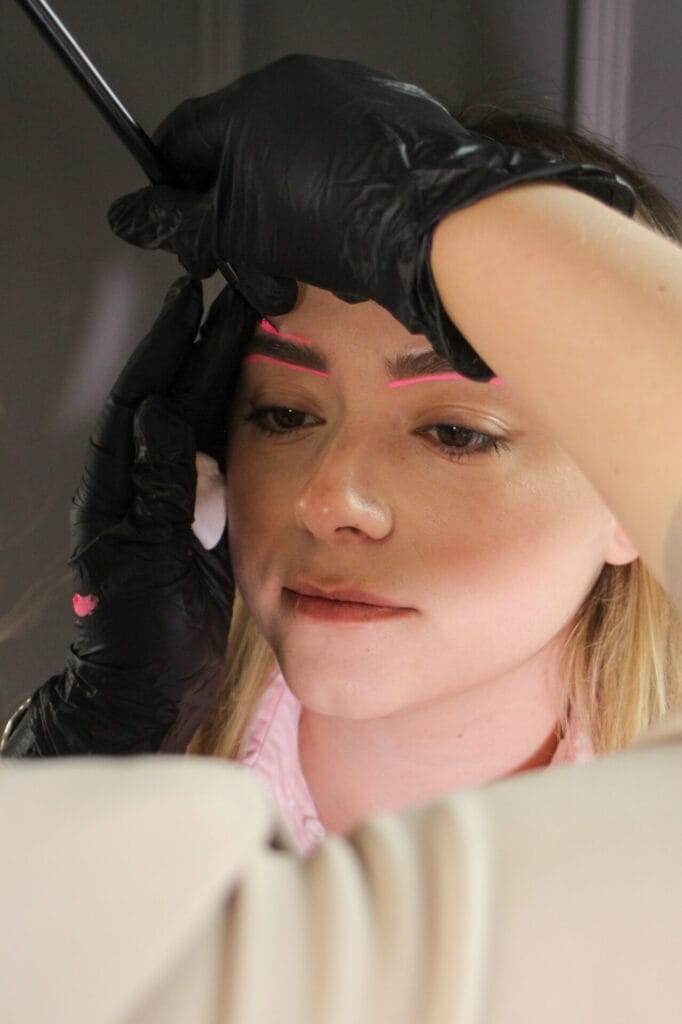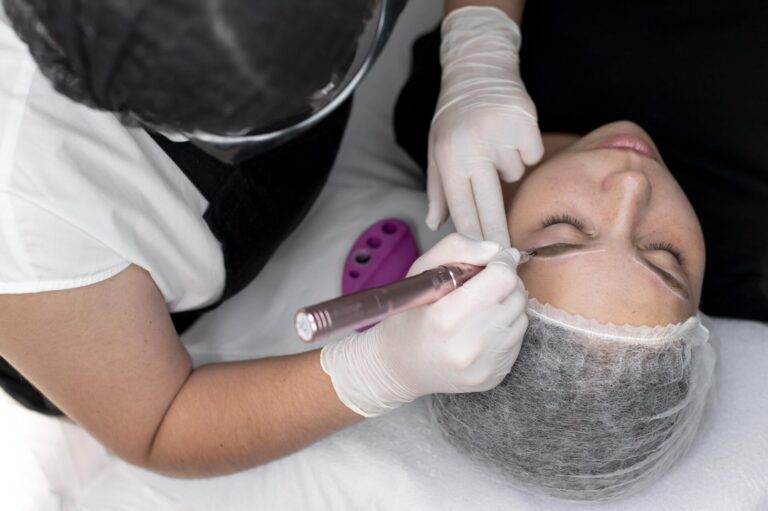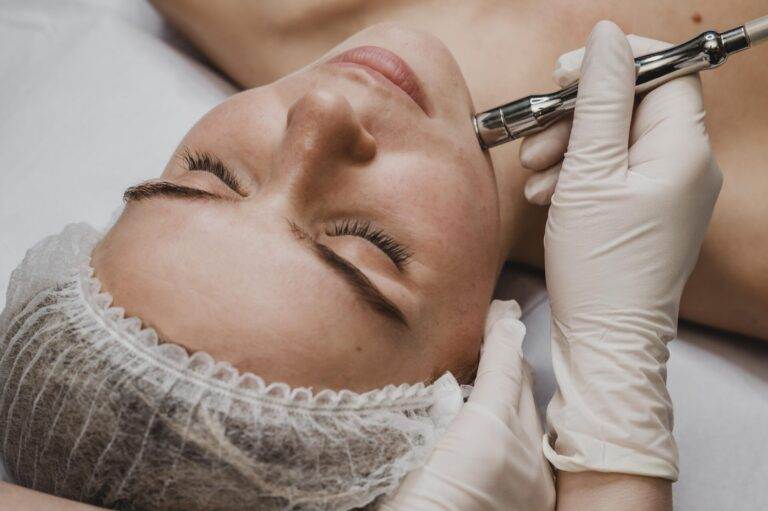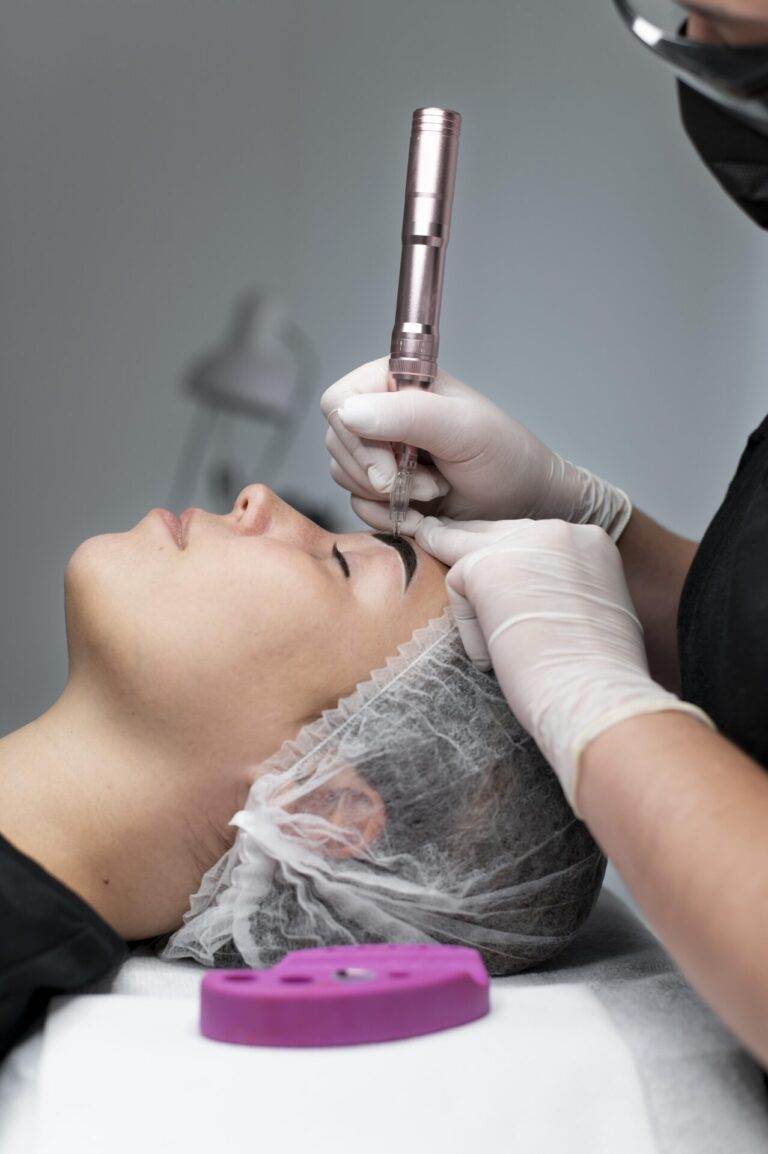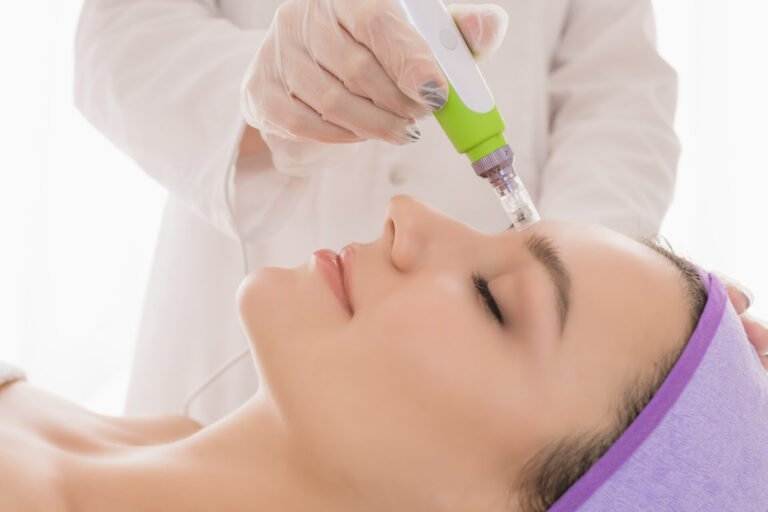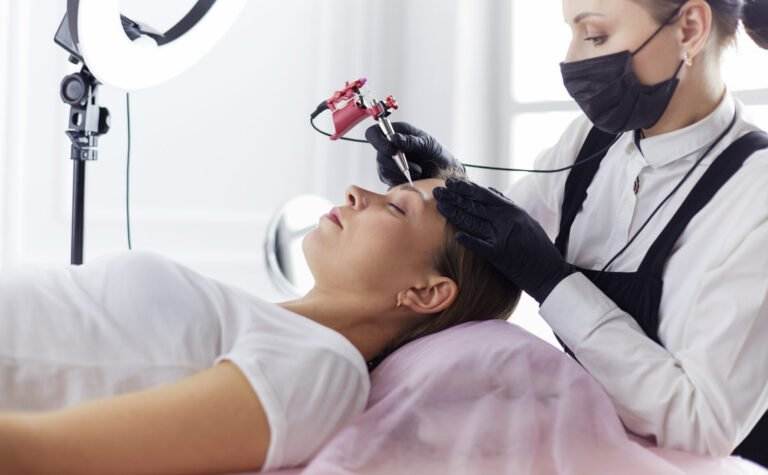Understanding Microneedling as a Skin Treatment
Microneedling is a popular skin treatment that involves the use of tiny needles to create small punctures in the skin’s surface. These micro-injuries stimulate the body’s natural healing process, leading to the production of collagen and elastin. This results in improved skin texture, reduced wrinkles, and enhanced overall skin appearance. Microneedling is effective in treating various skin concerns, including acne scars, hyperpigmentation, fine lines, and uneven skin tone. It is a minimally invasive procedure that can be performed by trained professionals at Embellish PB.
Microneedling process and benefits
Microneedling is a minimally invasive skin treatment provided by Embellish PB. During the procedure, tiny needles create micro-injuries on the skin’s surface, stimulating collagen and elastin production. This leads to improved skin texture, reduction in wrinkles, and an overall enhanced appearance. Microneedling is effective in treating acne scars, hyperpigmentation, fine lines, and uneven skin tone. It is a safe and proven procedure that can be performed by trained professionals at Embellish PB.
Efficacy of Microneedling in skin rejuvenation
Microneedling is highly effective in skin rejuvenation due to its ability to stimulate collagen and elastin production. The tiny needles used in the procedure create controlled micro-injuries, triggering the skin’s natural healing process. This leads to improved skin texture, reduction in wrinkles, and overall skin rejuvenation. Microneedling is a proven treatment that can address various skin concerns, providing long-lasting results.
Microneedling vs. Chemical Peels
Comparison of Microneedling and Chemical Peels
Microneedling and chemical peels are both popular skin treatments aimed at rejuvenating the skin. While microneedling involves the use of tiny needles to create controlled micro-injuries, chemical peels use chemical solutions to remove the top layer of the skin. Microneedling is more precise, targeting specific areas, while chemical peels provide a more generalized exfoliation. Both treatments stimulate collagen production and improve skin texture, but microneedling may be more effective in treating deeper wrinkles and scars.
Results and downtime of Microneedling and Chemical Peels
Microneedling and chemical peels can both deliver noticeable results and require minimal downtime. After microneedling, patients may experience redness and mild swelling, which usually subsides within a few days. The initial effects may be seen within a week, but more significant improvements in skin texture and tone develop over time as collagen production is stimulated. Chemical peels may result in peeling and flaking skin for a few days following the treatment, revealing smoother, rejuvenated skin with reduced pigmentation and improved overall appearance.
Microneedling vs. Laser Skin Resurfacing
Differences in Microneedling and Laser Skin Resurfacing
When comparing microneedling and laser skin resurfacing, it is important to understand the key differences between the two treatments. Microneedling uses tiny needles to create controlled micro-injuries in the skin, stimulating collagen production and improving skin texture. On the other hand, laser skin resurfacing utilizes laser technology to remove damaged skin layers and promote skin rejuvenation. Both treatments can effectively address various skin concerns, but the methods and mechanisms of action differ significantly.
Effectiveness and safety of the procedures
Microneedling and laser skin resurfacing are both effective procedures for improving skin texture and appearance. Microneedling stimulates collagen production and can address various concerns such as wrinkles, scars, and hyperpigmentation. Laser skin resurfacing, on the other hand, effectively removes damaged skin layers to reveal smoother and rejuvenated skin. Both treatments have been proven safe when performed by trained professionals, although individual experiences may vary. It is important to discuss any potential risks and side effects with a qualified skincare specialist before undergoing either procedure.
Microneedling vs. Dermal Fillers
Comparative analysis of Microneedling and Dermal Fillers
Microneedling and dermal fillers are two distinct treatments that can address different skin concerns. Microneedling stimulates collagen production and improves skin texture by creating micro-channels in the skin. On the other hand, dermal fillers add volume to areas with wrinkles or loss of firmness. While both treatments can enhance the appearance of the skin, they offer unique benefits and are suitable for different needs. It is important to consult with a skincare professional at Embellish PB to determine the most suitable treatment based on individual goals and concerns.
Long-term effects and natural results
Microneedling offers long-term effects and natural results. As the treatment stimulates collagen production, the skin continues to improve over time, resulting in smoother texture and reduced fine lines. The natural healing process of the skin ensures that the results look natural and not overly filled or artificial. With proper aftercare and maintenance, the effects of microneedling can last for several months, making it a valuable investment in achieving and maintaining youthful and healthy-looking skin.
Microneedling vs. Microdermabrasion
Benefits and drawbacks of Microneedling and Microdermabrasion
Microneedling and microdermabrasion are both popular skin treatments, but they have distinct differences. Microneedling uses tiny needles to create controlled micro-injuries on the skin, stimulating collagen production and enhancing overall texture. On the other hand, microdermabrasion exfoliates the outer layer of the skin using tiny crystals or a diamond-tipped wand, revealing a smoother complexion.
While both treatments can improve the appearance of fine lines, acne scars, and hyperpigmentation, microneedling offers more significant and long-lasting results due to its ability to penetrate deeper into the skin. Microdermabrasion, however, is a gentler treatment that is suitable for those with sensitive skin or minimal skin concerns.
It is important to note that microneedling may cause temporary redness and mild discomfort during the healing process, whereas microdermabrasion generally does not have downtime. It’s crucial to consult with a skincare professional to determine which treatment is best for individual needs and expectations.
Benefits and drawbacks of Microneedling and Microdermabrasion
Microneedling offers the benefit of stimulating collagen production and improving overall skin texture. It can effectively reduce the appearance of fine lines, acne scars, and hyperpigmentation. However, it may cause temporary redness and mild discomfort during the healing process. On the other hand, microdermabrasion is a gentle treatment suitable for those with sensitive skin and minimal skin concerns. It reveals a smoother complexion but may have less significant and long-lasting results compared to microneedling.
Suitability for different skin concerns
Microneedling is suitable for a variety of skin concerns. It is effective in reducing the appearance of fine lines and wrinkles, acne scars, and hyperpigmentation. It can also improve skin texture and overall complexion. However, for individuals with severe acne or active infections, microneedling may not be recommended. It is always best to consult with a skincare professional to determine the most suitable treatment for specific skin concerns.
Conclusion
Microneedling is a highly effective skin treatment that offers numerous benefits. It is a versatile procedure that can address various skin concerns, including fine lines, wrinkles, acne scars, and hyperpigmentation. Compared to other treatments like chemical peels, laser skin resurfacing, dermal fillers, and microdermabrasion, microneedling stands out for its efficacy and safety. With its ability to stimulate collagen production and improve skin texture, microneedling is a popular choice for individuals seeking natural and long-lasting results.
Summary of Microneedling compared to other skin treatments
Microneedling has proven to be a highly effective skin treatment compared to other options. It stimulates collagen production, improving skin texture and reducing the appearance of fine lines, wrinkles, and acne scars. Unlike chemical peels, microneedling is safe for all skin types and has minimal downtime. Compared to laser skin resurfacing, microneedling offers similar results with less risk of complications. In contrast to dermal fillers, microneedling provides long-term effects and natural results. Lastly, microneedling outshines microdermabrasion as it is more versatile and can address a wider range of skin concerns.
FAQs
- Can microneedling be performed on all skin types?
Yes, microneedling is safe for all skin types, including sensitive skin. It is a versatile treatment that can be customized based on individual needs. - How many microneedling sessions are needed for optimal results?
The number of sessions can vary depending on the skin concern being treated. Typically, a series of 3-6 sessions, spaced 4-6 weeks apart, is recommended for desired results. - Is microneedling painful?
Most patients experience minimal discomfort during microneedling. A topical numbing cream is applied prior to the treatment to ensure a comfortable experience. - What is the downtime after microneedling?
There is usually minimal downtime after microneedling. Some redness and mild swelling may occur immediately after the treatment, but it typically subsides within a day or two. - Are the results of microneedling permanent?
The results of microneedling are long-lasting, but not permanent. Regular maintenance sessions may be recommended to sustain the desired outcome. - Can microneedling be combined with other treatments?
Yes, microneedling can be combined with other skin treatments such as PRP (Platelet-Rich Plasma) therapy or topical serums to enhance the results and address specific concerns. - Is microneedling safe?
Microneedling is a safe and FDA-approved procedure when performed by a skilled and trained professional. - Are there any side effects of microneedling?
Minor side effects like redness, bruising, or temporary sensitivity to sunlight may occur, but they are generally mild and temporary. - How soon can results be seen after microneedling?
Visible improvements can often be observed after the first few sessions of microneedling, and the full benefits will continue to develop over time. - Can microneedling treat acne scars?
Yes, microneedling is an effective treatment for reducing the appearance of acne scars by stimulating collagen production and promoting skin rejuvenation.
Remember, consulting a qualified skincare professional is essential to determine the suitability of microneedling for your specific skin concerns.

